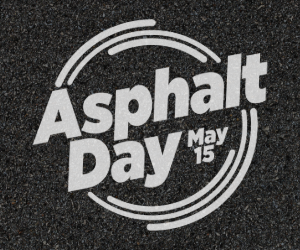
What comes to mind when you hear the term “sustainability”? Climate change, equity, environment, jobs, money? Without a definite context, the scope of sustainability can scale up very quickly.
Let’s look at sustainability from the context of a pavement system, which should be close to all our hearts.
Questions that I am often asked with regards to sustainability and pavements are:
• Does it account for long-term performance and durability?
• Are we spending more to make sustainable pavements?
• Are we really getting “greener” by using more recycled materials in our asphalt mixtures if they end up cracking earlier and need to be replaced more often?
(You might be thinking now, “I am not reading this article to learn what the questions are around pavement sustainability, but rather what the answers are.” OK, fair point.)
The Federal Highway Administration (FHWA) laid out these guidelines to identify a sustainable pavement(1):
• Achieve the engineering goals for which they were constructed
• Preserve and (ideally) restore surrounding ecosystems
• Use financial, human and environmental resources economically
• Meet human needs such as health, safety, equity, employment, comfort and happiness
Inherent in these guidelines is that for a pavement to be termed sustainable, it must meet the expected performance requirements. Along with this, there is the need to meet the triple bottom line principles of preserving the environment, using resources economically and meeting social needs.
Asphalt Institute (AI) member companies produce asphalt binder used for paving and roofing projects, as well as additives that are blended with asphalt binder. Hence the scope of sustainability within the purview of our members is primarily related to the binder and additive production stage. However, the downstream benefits of using the manufactured binder and additives should also be considered to attain sustainability holistically.
Let’s look at each of the four FHWA guidelines for sustainable pavement from the perspective of binder and additive manufacturers.
Achieve the engineering goals for which they were constructed. This aligns perfectly with the goals of our members to produce high-quality binder and additives that result in long-lasting pavements and roofs. These materials are evaluated for performance (short-term and long-term) in AI member facilities as well as agency laboratories. The AI laboratory at our headquarters, as well as our eight regional engineers spread across North America, are committed to providing outstanding technical support and training to the industry which contributes to the high level of performance agencies and stakeholders expect.
Preserve and (ideally) restore surrounding ecosystems. As quoted by management consultant and educator Peter Drucker, “If you can’t measure it, you can’t manage it.” AI members in coordination with AI’s Health, Safety, and Environment (HSE) committee have been complying with various USEPA requirements for a long period of time and will continue to do so. In addition, AI completed a third-party reviewed life cycle assessment (LCA) of asphalt binders that was published in 2019. LCA methodology is based on International Organization for Standardization (ISO) standards 14040 and 14044. AI’s study met all these requirements.
Use financial, human and environmental resources economically. Asphalt binders and additives continue to provide value in pavement and roofing applications. Durability in our pavements and roofs is key to avoiding disruption of our daily routine. A study was sponsored by the Asphalt Institute, FHWA and others in 2007 to quantify the overall performance and economic benefits of polymer-modified asphalt(2).
Meet human needs such as health, safety, equity, employment, comfort and happiness. The asphalt binder manufacturing industry as well as the asphalt pavement construction industry have created vast job opportunities. AI training helps ensure workforce quality and individual growth. AI member companies always prioritize the safety of workers, as demonstrated by safety products developed through our HSE committee. These range from asphalt burn videos to H2S guidance and can be found in AI’s online store. From the perspective of the traveling public, the use of a high-quality binder ensures smooth and durable roads.
Understanding these four guidelines helps us participate in important discussions around the topic of sustainable pavements. It is important for us to know how our current practices and products already contribute toward sustainability, and of course what we can do differently to improve. Recognize that pavement sustainability has four pillars, and we should not just focus on one of those while ignoring the others.
Dr. Bhat is the Sustainability Engineer for the Asphalt Institute.
References:
1. Van Dam, T.J., Harvey, J., Muench, S.T., Smith, K.D., Snyder, M.B., Al- Qadi, I.L., Ozer, H., Meijer, J., Ram, P., Roesler, J.R. and Kendall, A., 2015. “Towards sustainable pavement systems: a reference document” (No. FHWA-HIF-15-002). United States. Federal Highway Administration.
2. Von Quintus, H.L., Mallela, J. and Buncher, M., 2007. Quantification of effect of polymer-modified asphalt on flexible pavement performance. “Transportation Research Record”, 2001(1), pp.141-154.














